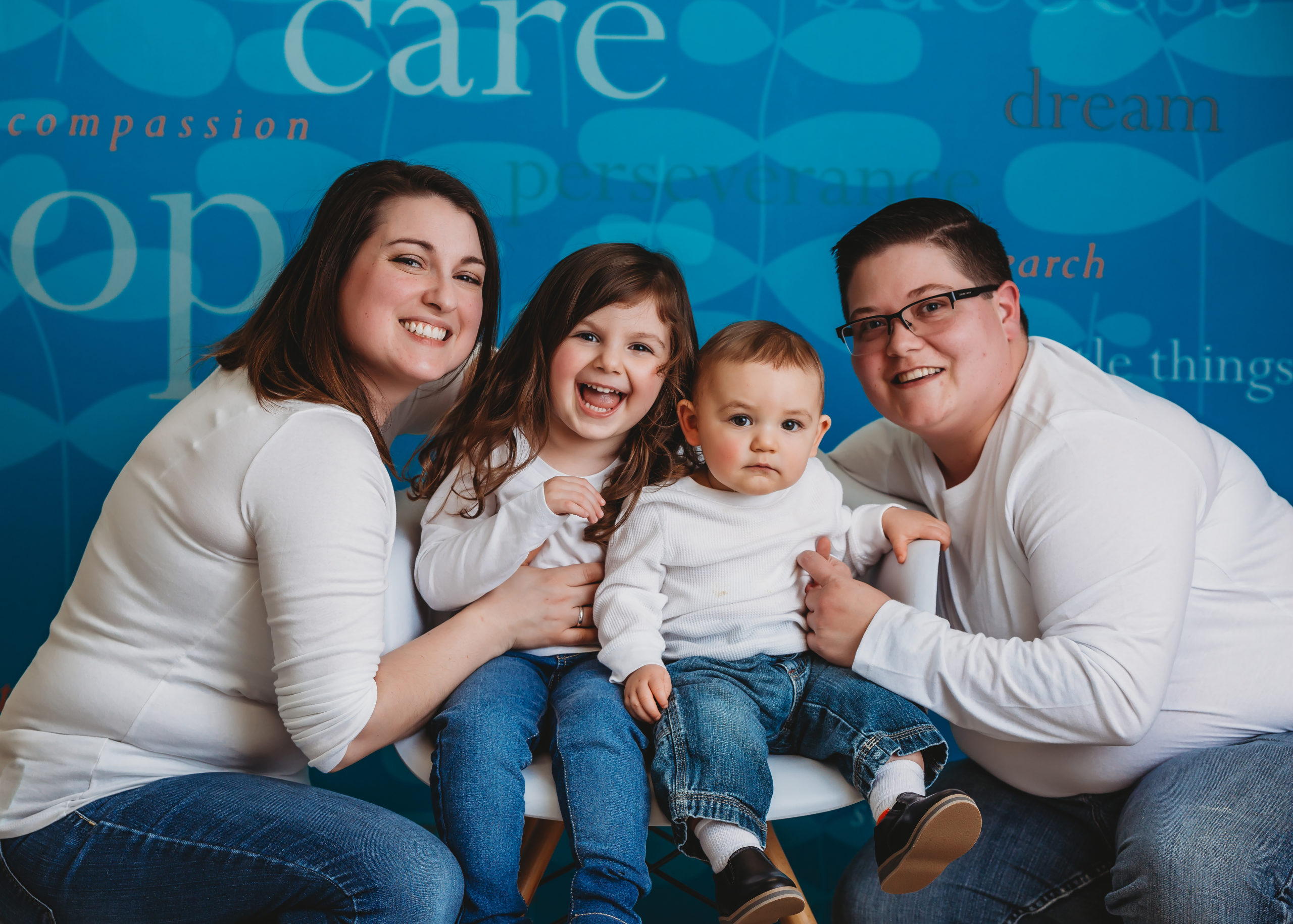Becoming parents has special challenges for LGBTQ+ communities. Yet, that doesn’t stop people from planning, starting or adding to their families, and it’s getting easier and clearer in Connecticut, thanks to the Connecticut Parentage Act, which went into effect in January of this year.
While older members of the LGBTQ+ communities chose not to have children or raise families, a 2019 study by Family Equality found that 63 percent of LGBTQ+ millennials ages 18-35 planned to start or expanded a family in the next few years. Of those, 63 percent plan to use assisted reproductive care, fostering, or adoption, compared to older people for whom the majority of children were conceived through intercourse.
Helping families, whether or not they identify as LGBTQ+, has been the mission of the Center for Advanced Reproductive Services, based in Farmington with offices in Hartford, New London and Branford. Established in 1983, the Center has been responsible for just over 17,000 live births, according to CEO Paul Verrastro. Of those, approximately 2,000 have been to LGBTQ+ individuals, though he adds that the Center has only been tracking LGBTQ+ parents as a separate group for the last decade.
The Center serves many
LGBTQ+ people, he says:
“Single people, gay male
couples, lesbians, and transgender people at various points in their transition.” They offer in-vitro fertilization (the only option for men) or intrauterine insemination, and option for lesbian and trans people. He adds that most lesbian use reciprocal IVF where one partner provides the egg and the other carries the child so there will be a biological connection to both parents.
Whatever method people select, Verrastro is eager for everyone to understand the ramifications of the Parentage Act and how it serves LGBTQ+ communities. He says, “Connecticut has always been LGBTQ+ friendly, even if it hasn’t meant to be. In the early 90s, we were the first to recognize sperm donation as a legitimate way to build a family. In the early 2000s, we were also the first to pass legislation to recognize the gestational carrier, another word for surrogate.”
These moves were mainly designed to support heteronormative parenting, but they benefitted LGBTQ+ people as well. To that end, Verrastro says, it’s essential for people who are considering becoming parents to be informed about the act and its benefits.
“The beauty of the act,” he says, “is that when the child is born in the hospital, the parents or parents are able to complete an ‘Acknowledgement of Parenthood.’ It has removed gender as an assumption as to who is the parent of the child, and it has removed the number of parents.
“In the past, it was automatically assumed that all kids had two parents and that they were a mom and a dad. Now, at the time the child is born—prior to completing the birth certificate—they can choose the parent.”
Verrastro notes that this form has streamlined the process of parenthood significantly. The Acknowledgement of Parenthood is a legally binding form. Previously, the prospective parents would have to go to the courts to obtain a pre-birth order, and allow the child to be born. At that time, the woman delivering the child would be the parent on the birth certificate, and the other parent would have to do a post-birth adoption.
Over and above the legal advantages, there are emotional benefits as well. Because parents can be legally acknowledged from birth, they achieve a level of equality and legitimacy as parents that cannot be questioned. This can be essential for practical matters as medical decisions, insurance, inheritance, and preserving parental rights should a couple ultimately separate. The intangible benefit is that the family is recognized by the state as equal to traditional, heterosexual couples.
Since it only went into effect this year, Verrastro says that they are still educating people about the parentage act and what it means. Verrastro himself identifies as a member of the LGBTQ+ community, and the Center is currently undergoing the accredidation process for the Healthy Equality Index, which Verrastro describes as a seal of approval for policies, training, use of preferred pronouns, new names, genders, and new genders. All of these are established practices of the Center.
Verrastro says the door is always open for prospective parents seeking advice. The Center’s website (www.uconnfertility.com) also includes a dedicated section with comprehensive information for LGBTQ+ individuals exploring building their families.
—Christopher Byrne








More Stories
More Than Ever, Pride as Resistance, Visibility and Unity
Grounding in Daily Purposeful Actions
It’s (Not) All In Your Head: Mental Health And Sex